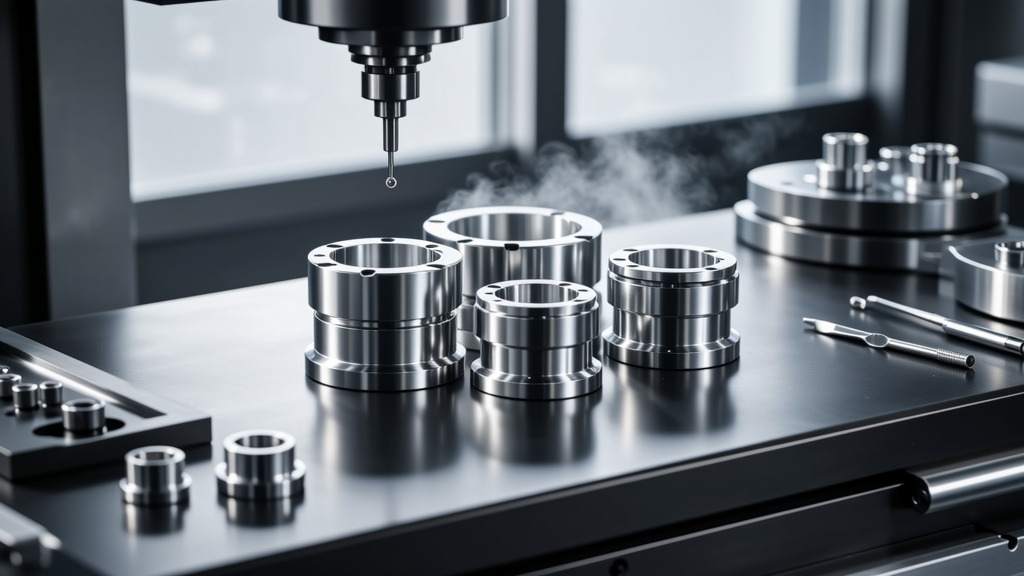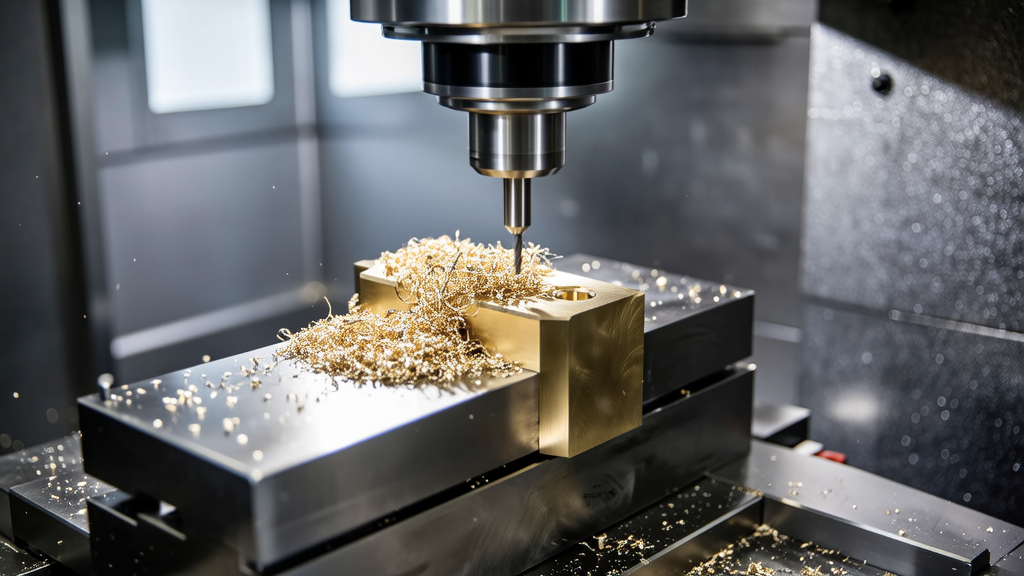Furthermore, we will highlight the significance of regular equipment maintenance and employee training to ensure optimal performance. By understanding the interplay between different machining variables, manufacturers can significantly reduce waste, improve quality, and ultimately accelerate production timelines.
Whether you’re a seasoned professional or new to the field, this guide offers valuable insights that will help you make informed decisions in your CNC machining operations. Get ready to elevate your production capabilities and discover how effectively implementing these optimization techniques can lead to remarkable results, making your business a frontrunner in precision parts manufacturing in 2025.
You know how frustrating it can be to pour time and resources into CNC machining, only to find your precision parts aren’t meeting standards? In the competitive landscape of manufacturing, especially looking toward 2025, optimizing CNC machining is essential. I’ve been in this game for a while, and I can tell you that applying some practical strategies can make a world of difference. Today, I’m sharing some effective ways to get your CNC processes running smoother and more accurately.
Understanding Your CNC Machinery
CNC machines are fantastic tools for producing high-precision components. However, it’s crucial to understand their capabilities and limitations. For instance, choosing the wrong tool or material can lead to inefficiencies or even costly errors. Last year, I worked with a client who experienced a production slowdown because they underestimated the effect of tool wear. We changed the tooling schedule to ensure replacements happened sooner, which ultimately improved precision and reduced downtime.
Here are some points to remember about CNC machinery:
- Regular Maintenance: Just like any other piece of machinery, CNC machines require regular maintenance. This not only prolongs their life but also ensures they run at peak performance.
- Understanding Tolerances: Each part will have specific tolerance requirements. Knowing these can help you set the machine correctly from the start instead of spending precious time adjusting midway.
- Material Selection: Not all materials are created equal for CNC machining. Some materials will machine better and produce a higher level of precision than others. For instance, aluminum is much easier to work with than hardened steel.
Tooling Best Practices
Selecting the right tools is foundational for achieving optimal results in CNC machining. I remember helping a friend revamp his CNC setup, and we spent some time analyzing his tool library. We realized he had tools that were either too aged or unsuitable for his application.

- Invest in Quality Tools: It might be tempting to cut costs with cheaper tools, but in my experience, high-quality tools can make a significant difference in precision and longevity.
- Cutting Parameters: Pay attention to your cutting speeds and feeds. If you push too hard or go too fast, it could lead to poor surface finishes and inaccuracies.
- Tool Path Optimization: Utilizing the CNC machine’s software package can help determine the most efficient path for the tool, reducing cycle time and improving the finish.
| Tool Type | Material Compatibility | Precision Level | Recommended RPM |
|---|---|---|---|
| End Mill | Aluminum | High | 7000-12000 |
| Carbide Insert | Steel | Medium | 3000-6000 |
Employ Innovative Technologies
As we approach 2025, new technologies are revolutionizing CNC machining processes. Integrating these innovations can help you maintain efficiency and precision.
- Automated Monitoring: Many CNC machines now come equipped with monitoring systems that can analyze performance in real-time. This allows quick adjustments to maintain precision.
- Simulation Software: Before starting a complex machining operation, using simulation software can allow you to identify potential issues beforehand. It’s saved me from making costly mistakes on numerous occasions.
- Advanced Materials: The evolution of CNC machining is also tied to material innovation. New materials can yield better performance and precision. By keeping an eye on advancements, you can always stay ahead.
If you’re considering improving your CNC machining processes, I highly recommend taking it step by step. Experiment with these suggestions, analyze the results, and make adjustments as needed. As someone who has worked hands-on with numerous machining setups, these practices have worked wonders for my projects. If you try these methods, feel free to come back and share your results – I love hearing about practical applications!
What are the key factors to consider when understanding CNC machinery?
When it comes to CNC machinery, there are several factors that play a crucial role. First, it’s important to know the specific capabilities and limitations of your machine. This includes aspects like weight capacity, speed, and types of materials it can handle. Understanding these can help you avoid costly mistakes.
Another factor is regular maintenance. Maintaining your machine not only prolongs its life but also ensures it operates at peak performance. Simple tasks like lubrication, cleaning, and checking for wear can make a big difference in precision and efficiency.

How can innovative technologies improve CNC machining?
Innovative technologies are changing the face of CNC machining. One significant advancement is automated monitoring systems. These systems can analyze your machine’s performance in real-time and alert you to any issues, allowing for quick adjustments.
Moreover, simulation software is another great tool. You can run a virtual setup before executing the actual machining process. This helps in identifying potential problems beforehand, saving you time and materials.
What are some best practices for tooling in CNC machining?
Selecting the right tools is fundamental for quality CNC machining. It’s generally advised to invest in high-quality tools, as they tend to last longer and produce better results. Cheaper tools might seem like a good deal at first, but they can end up costing you more in the long run.
Additionally, keeping an eye on your cutting parameters is crucial. Finding the right balance between speed and feed rate can help you achieve better finishes. Experimenting can be beneficial, so don’t hesitate to tweak your settings to see what works best.
How does material selection impact CNC machining precision?
The choice of material has a direct impact on the precision of CNC machining. Some materials, like aluminum, are generally easier to work with and tend to produce better finishes. In contrast, others, like hardened steel, may require more advanced techniques and tools to achieve the same level of precision.
Also, understanding the hardness and machinability of the materials you’re working with can help you select the appropriate tooling and cutting parameters. This knowledge can significantly enhance the outcome of your machining operations.








